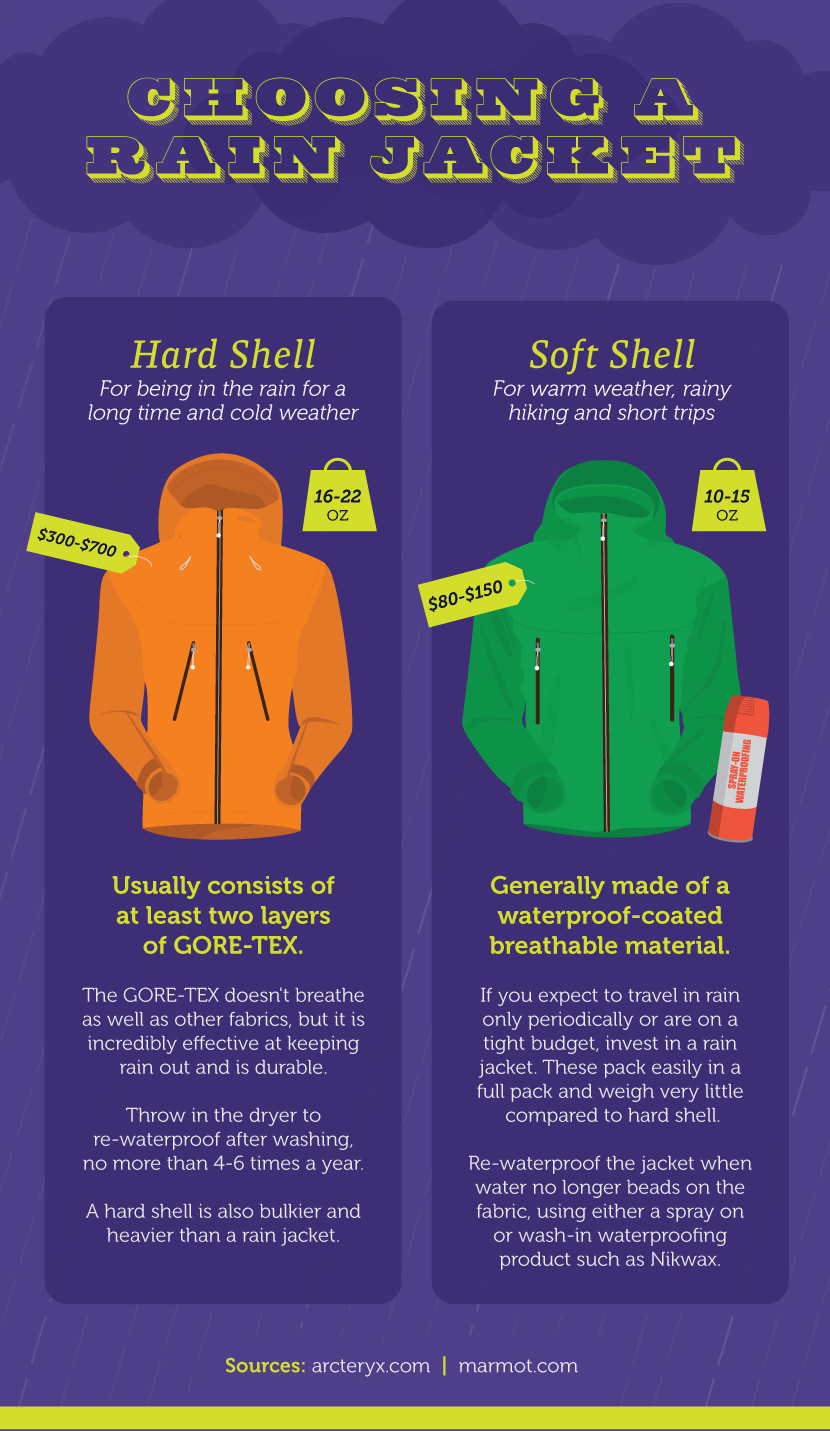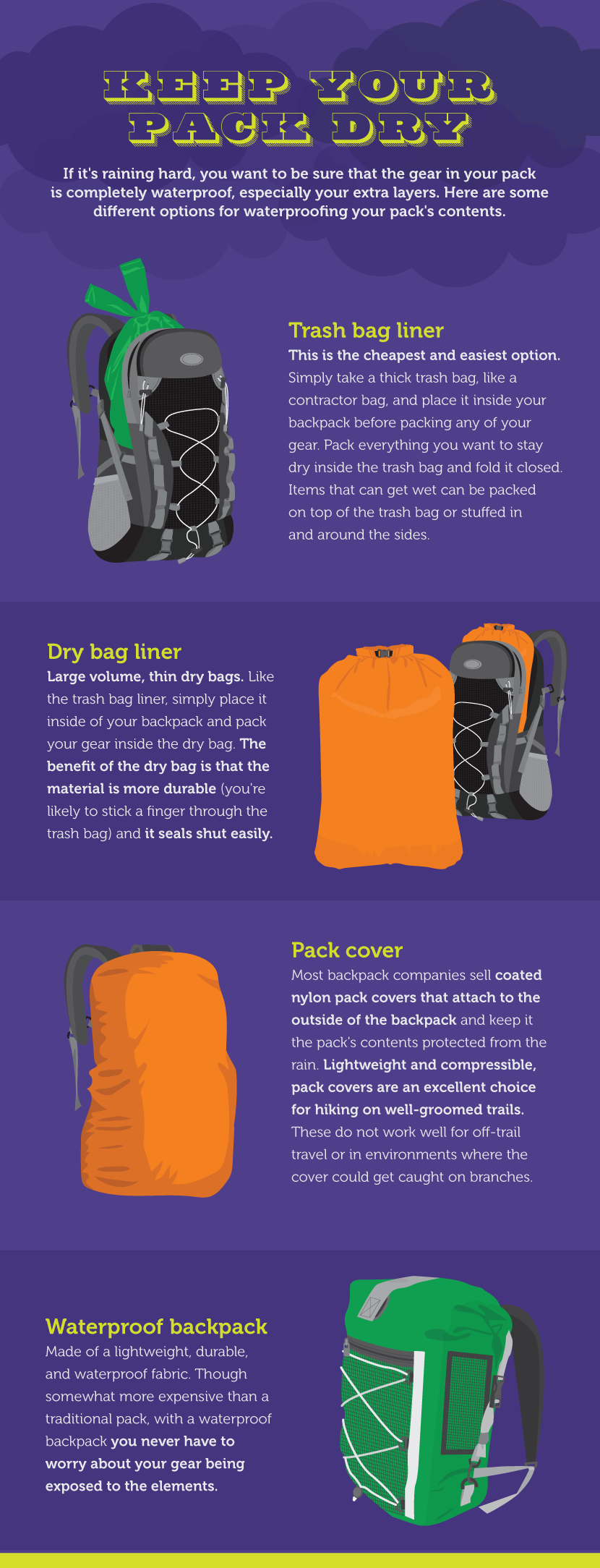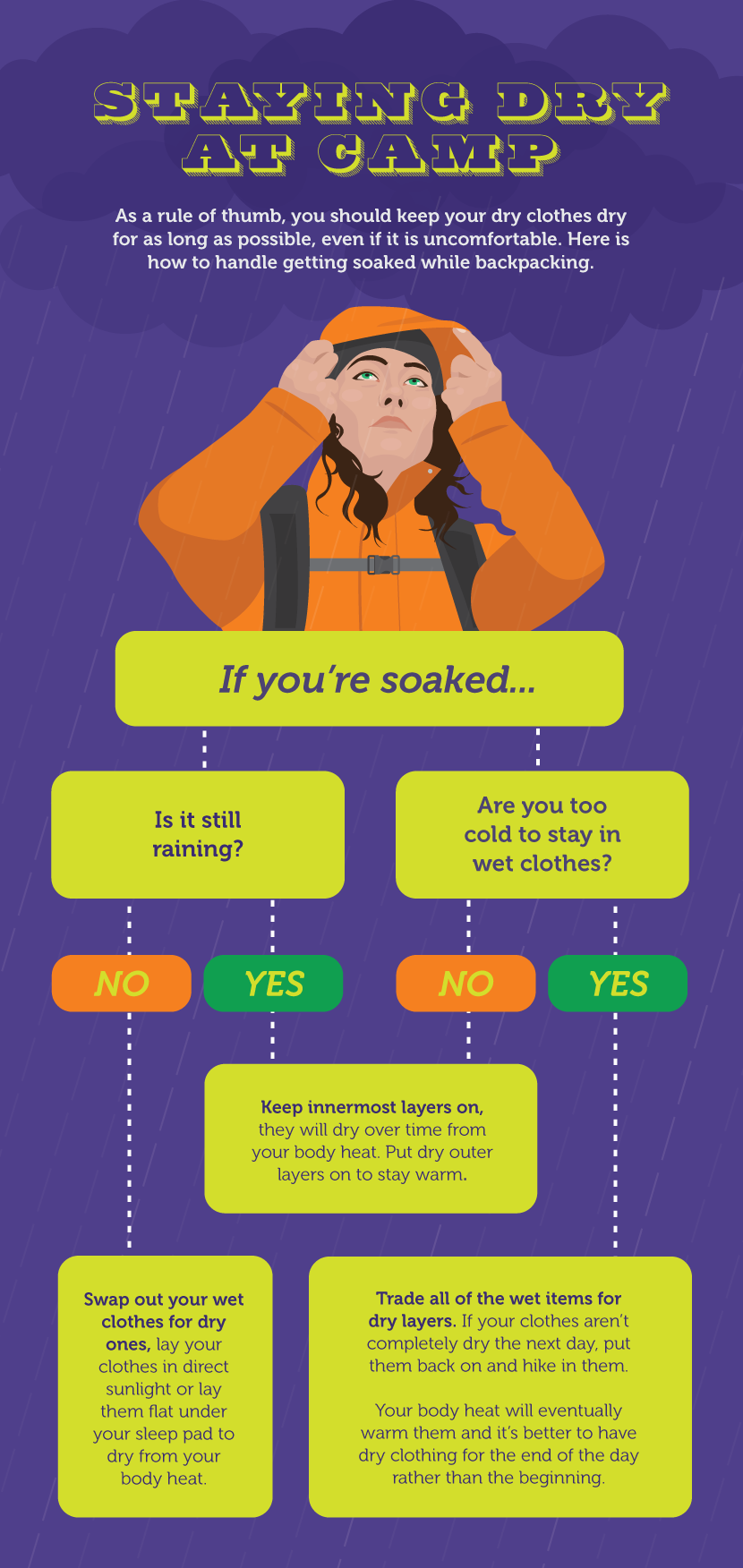Conquer the Rain: How to Stay Comfortable Hiking in Bad Weather

Many people avoid going outdoors in the rain, but backpacking in the rain can actually be really fun: the sound of rain in the trees, the cooler temperatures, and the smell of fresh water on the plants are all unique components of a rainy-day hike. The rain also keeps the bugs away and settles trail dust created by other hikers. Don’t let a rainy forecast ruin your weekend backpacking plans.
Here are some tips and tricks for staying warm and dry when the weather just won’t cooperate.
Stay Dry
The first line of defense in a rainstorm is rain gear. No matter what the weather forecast says, don’t head out the door without a waterproof jacket in your pack. There are a lot of options to consider when purchasing a rain jacket or rain pants, including cost, weight, durability, and material.
 Source: Partselect.com
Source: Partselect.com
Stay Warm
Whether you expect it to rain or not, the most important thing to look for in outdoor clothing is that it contains no cotton. When cotton gets wet, it holds the moisture close to your skin and actually sucks heat away from your body. There are a number of synthetic fabrics, like polypropylene and synthetic fleece (pile), that are designed to wick moisture away from your skin, which helps your body stay warm. Wool, which is a popular natural option, also stays very warm when wet.
While backpacking in the rain, the goal is to stay warm and dry, but if you have to pick one or the other on the trail, it’s usually enough to just stay warm. During a short storm, a rain jacket or hard shell and synthetic hiking pants will serve you well. The rain jacket keeps your core dry and, therefore, warm. The pants may get wet, but the heat from your body will dry them out as you hike. In warm weather, it’s often overkill to wear rain pants, which don’t breathe as well as hiking pants. In a deluge or very cold rain, it’s usually time to break out the rain pants. If it’s really cold and rainy, add a layer under the rain jacket, but try to avoid wearing your warmest layer. If you wear everything you have and the rain jacket stops keeping out water, you suddenly have no dry layers to change into when you stop moving and your body begins to cool down.
A light hat under the hood of a rain jacket can go a long way toward keeping your body warm in the rain, even if the hat gets wet. Be sure to keep your hood up even in light rain because it keeps the water from running down your neck and into your collar. Keep your sleeves inside the rain jacket and the rain jacket cuffs tight to prevent water from seeping up your arms. In cold weather, layer rain pants over long underwear. If you’re wearing gaiters, be sure to keep the rain pants over the gaiter, or else the water will run down your legs and into your shoes.
A common misconception is that a rain jacket can double as a windbreaker while hiking. Rain jackets don’t breathe quite as well as windbreakers because the fabric has to be tighter to keep the water out. Therefore, if you hike around in a rain jacket when it isn’t raining, you’ll often find yourself sweating more than you would in a different layer. Sweat and overuse break down the waterproof material, meaning you can actually ruin a rain jacket by wearing it when you don’t need to. Save the rain jacket for the rain and invest in a lightweight wind jacket for normal hiking. It’s worth the extra weight.
 Source: Partselect.com
Source: Partselect.com
If You Get Wet
Don’t panic if you get a little (or a lot) wet! It’s not the most pleasant way to spend a day, or a night, but if you have enough clothing to stay warm, the discomfort of a few wet layers won’t cause your demise. The most important rule is to keep the dry things dry and the wet things wet, unless you can get them dry. A lot of people get to camp, set up, and immediately remove every wet layer, replacing it with their dry backups. This is fine, unless you then put all the wet layers in a ball in the bottom of your pack. They will never dry balled up, and if the rain continues, they won’t dry unless you warm them up with your body heat. At some point, you will have to put the wet layers back on, a process that is much more palatable if the clothes have already had a chance to dry a little against your skin.
 Source: Partselect.com
Source: Partselect.com
If you arrive in camp completely drenched and the rain hasn’t stopped, remove your outermost layers and put on something dry. If you can comfortably leave a base layer on under a dry jacket, that’s the best option as it will dry quickly. However, if you’re miserably cold, trade all of the wet items for dry layers. Lay the wet layers flat under your sleep pad; the compression of the layers when you sleep is more conducive for drying than leaving the layers balled up. If the sun comes out, hang all of your wet layers in direct sunlight! If it looks like the storm has set in for a few days, it’s crucial to always have a set of dry clothes for when you stop hiking. If you can’t comfortably dry your wet layers overnight, be sure to hike in them the next day and tuck the dry layers in a safe place in your pack. A common mistake is for people to soak all of their clothes because it’s more comfortable to start the day in dry layers. This is risky because it leaves you with no dry options if the weather stays bleak.
In Camp
If your body can stay warm enough, its heat will dry your wet layers. It does take some time and it’s often uncomfortable, but it’s definitely effective and worth the effort. For long underwear layers (top and bottom) it won’t take a lot of exercise or warmth for your body to turn a wet item into a damp item and eventually back into a dry piece of clothing. If you sleep in something that’s damp, it will often be dry in the morning. A good trick with socks is to wrap them around your stomach or, if they’re really wet, place them under your sleeping bag. Your core generates a lot of heat, which helps speed the drying process.
Waterproofing
At the end of a rainy trip, it’s important to take care in cleaning your rain gear. After several uses, your rain jacket is probably ready to be re-waterproofed. The DWR (durable water repellent) finish, which is applied to the outside of most rain jackets and hard shells, breaks down over time. With a GORE-TEX jacket, simply throw it in the dryer, which will reactivate the finish. With a normal rain jacket, it’s sometimes better to spray the jacket with a new coat of DWR, which you can buy at most outdoor retailers. Simply follow the directions for washing and drying your waterproof gear. It’s not necessary to re-waterproof after every use, but after a handful of trips, it’s probably time. You’ll know it’s time when water no longer beads on the outside of the coat, but immediately permeates the first layer of the fabric. Maintaining your gear’s waterproofing will ensure your rain gear has a long life and that your under-layers remain dry.
— Guest post by PartSelect



 Powered by Roanoke Outside
Powered by Roanoke Outside